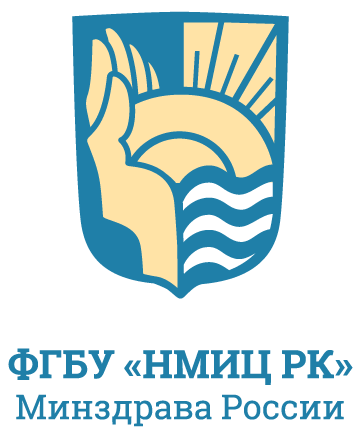Issue 24-3, 2025
Original article
Modification and Characteristics of Biofunctional Properties of Collagen-Containing Xerogels for Medical Purposes: Results of the Experimental Study
![]() Petr S. Eremin,
Petr S. Eremin,
![]() Elena A. Rozhkova,
Elena A. Rozhkova,
![]() Pavel A. Markov*
Pavel A. Markov*
National Medical Research Center for Rehabilitation and Balneology, Moscow, Russia
ABSTRACT
National Medical Research Center for Rehabilitation and Balneology, Moscow, Russia Резюме (EN):
INTRODUCTION. Development and improvement of methods and materials used in regenerative medicine for non-drug stimulation of tissue repair will solve a number of clinical problems associated with diseases that impede the normal process of reparative regeneration, such as diabetes, cardiovascular diseases and metabolic disorders. Collagen and its derivatives are already used as components of biomaterials for medical purposes. However, low mechanical strength, rapid biodegradation in physiological environments and weak resistance to enzymes limit the scope and effectiveness of their medical and biological applications.
AIM. The aim of the study is to evaluate the effect of carboxylic acids on the strength, biodegradability and biocompatibility of collagen xerogel, in vitro.
MATERIALS AND METHODS. The mechanical characteristics of the materials were assessed using a TA.XTplus texture analyzer. The biocompatibility of the materials was assessed by light and fluorescence microscopy using fluorescent dyes (DAPI, Rhodamine) and a Calcein AM (CCK-F) cell viability kit.
RESULTS AND DISCUSSION. A xerogel based on denatured collagen with high strength characteristics was created. The parameters of heat treatment and concentrations of carboxylic acids were selected to stabilize the mechanical properties of the hydrogel. It was found that the introduction of citric acid into the hydrogel from denatured collagen and subsequent high-temperature treatment allows to increase the mechanical strength of the xerogel from 59 ± 3 to 82 ± 13 kPa. In addition, the introduction of citric acid into the composition of the xerogel increases its resistance to biodegradation by more than three times. The microenvironment created by the xerogel containing citric acid does not have a cytotoxic effect, but it does inhibit proliferation of fibroblasts.
CONCLUSION. The results of the in vitro study showed that the obtained material can become a promising platform for use both as an extracellular scaffold and as an independent biomaterial for filling the volume of tissue lost as a result of surgery or injury.
KEYWORDS: biomimetics, hydrogel, xerogel, collagen, gelatin, strength, Young’s modulus
FOR CITATION: Eremin P.S., Rozhkova E.A., Markov P.A. Modification and Characteristics of Biofunctional Properties of Collagen-Containing Xerogels for Medical Purposes: an Experimental Study Results. Bulletin of Rehabilitation Medicine. 2025; 24(3):29–37. https://doi.org/10.38025/2078-1962-2025-24-3-29-37 (In Russ.).
FOR CORRESPONDENCE:
Pavel A. Markov, Е-mail: markovpa@nmicrk.ru, p.a.markov@mail.ru
References:
-
Amadeh A., Mohebbi N., Amadeh Z., Jamshidbeigi A. Comparative Efficacy of Autolytic and Collagenase-Based Enzymatic Debridement in Chronic Wound Healing: A Comprehensive Systematic Review. Int Wound J. 2025; 22(4): e70177. https://doi.org/10.1111/iwj.70177
-
Марков П.А., Еремин П.С., Падерин Н.М. и др. Влияние биопластического материала на адгезию, рост и пролиферативную активность фибробластов человека в средах, имитирующих кислотность раневого ложа при остром и хроническом воспалении. Вестник восстановительной медицины. 2023; 22(2): 42–51. [Markov P.A., Eremin P.S., Paderin N.M. et al. Effect of Bioplastic Material on Adhesion, Growth and Proliferative Activity of Human Fibroblasts when Incubated in Solutions Mimic the Acidity of Wound an Acute and Chronic Inflammation. Bulletin of Rehabilitation Medicine. 2023; 22(2): 42–51. https://doi.org/10.38025/2078-1962-2023-22-2-42-51 https://doi.org/10.38025/2078-1962-2023-22-2-42-51 (In Russ.).]
-
Кудряшова И.С., Марков П.А., Костромина Е.Ю. и др. Разработка раневых покрытий для регенеративной медицины. Вестник восстановительной медицины. 2021; 20(6): 84–95. [Kudryashova I.S., Markov P.A., Kostromina E.Yu. et al. Development of Wound Dressing for Regenerative Medicine. Bulletin of Rehabilitation Medicine. 2021; 20(6): 84–95. https://doi.org/10.38025/2078-1962-2021-20-6-84-95 https://doi.org/10.38025/2078-1962-2021-20-6-84-95 (In Russ.).]
-
Le Corre-Bordes D., Hofman K., Hall B. Guide to electrospinning denatured whole chain collagen from hoki fish using benign solvents. Int J Biol Macromol. 2018; 112: 1289–1299. https://doi.org/10.1016/j.ijbiomac.2018.02.088
-
Ratnatilaka Na Bhuket P., Li Y., Yu S.M. From Collagen Mimetics to Collagen Hybridization and Back. Acc Chem Res. 2024; 57(12): 1649–1657. https://doi.org/10.1021/acs.accounts.3c00772
-
Patil V.A., Masters K.S. Engineered Collagen Matrices. Bioengineering (Basel). 2020; 7(4): 163. https://doi.org/10.3390/bioengineering7040163
-
Islam M.M., AbuSamra D.B., Chivu A., et al. Optimization of Collagen Chemical Crosslinking to Restore Biocompatibility of Tissue-Engineered Scaffolds. Pharmaceutics. 2021; 13(6): 832. https://doi.org/10.3390/pharmaceutics13060832
-
Cumming M.H., Leonard A.R., LeCorre-Bordes D.S., Hofman K. Intra-fibrillar citric acid crosslinking of marine collagen electrospun nanofibres. Int J Biol Macromol. 2018; 114: 874–881. https://doi.org/10.1016/j.ijbiomac.2018.03.180
-
Jayachandran B., Parvin T.N., Alam M.M., et al. Insights on Chemical Crosslinking Strategies for Proteins. Molecules. 2022; 27(23): 8124. https://doi.org/10.3390/molecules27238124
-
Xu H., Sh. Li, Xu L., Yang Y. Low-temperature crosslinking of proteins using non-toxic citric acid in neutral aqueous medium: Mechanism and kinetic study. Industrial Crops and Products. 2015; 74: 234–240. https://doi.org/10.1016/j.indcrop.2015.05.010
-
Singh P., Baisthakur P., Yemul O.S. Synthesis, characterization and application of crosslinked alginate as green packaging material. Heliyon. 2020; 6(1): e03026. https://doi.org/10.1016/j.heliyon.2019.e03026
-
Shao Z., Shen D., Fan F., et al. Facile synthesis of chitosan-tartaric acid biosorbents for removal of Cu(II) and Cd(II) from water and tea beverages. Int J Biol Macromol. 2023; 241: 124533. https://doi.org/10.1016/j.ijbiomac.2023.124533
-
Lu Y., Liu J., Ren B., et al. Room-temperature gelcasting of alumina with tartaric acid and glutaraldehyde. Ceramics International. 2020; 46(8): 11432–11435. https://doi.org/10.1016/j.ceramint.2020.01.119
-
Tan T., Zhou J., Gao X., et al. Synthesis, characterization and water-absorption behavior of tartaric acid-modified cellulose gel fromcorn stalk pith. Industrial Crops and Products. 2021; 169: 113641. https://doi.org/10.1016/j.indcrop.2021.113641
-
Zan J., Qian G., Deng F., et al. Dilemma and breakthrough of biodegradable poly-l-lactic acid in bone tissue repair. Journal of Materials Research and Technology. 2022; 17: 2369–2387. https://doi.org/10.1016/j.jmrt.2022.01.164
-
Salihu R., Abd Razak S.I., Zawawi N.A., et al. Citric acid: A green cross-linker of biomaterials for biomedical applications. European Polymer Journal. 2021; 146: 110271. https://doi.org/10.1016/j.eurpolymj.2021.110271
-
Antoine E.E., Vlachos P.P., Rylander M.N. Tunable collagen I hydrogels for engineered physiological tissue micro-environments. PLoS One. 2015; 10(3): e0122500. https://doi.org/10.1371/journal.pone.0122500
-
Antman-Passig M., Levy S., Gartenberg C., et al. Mechanically Oriented 3D Collagen Hydrogel for Directing Neurite Growth. Tissue Eng Part A. 2017; 23(9–10): 403–414. https://doi.org/10.1089/ten.TEA.2016.0185
-
Landfeld A., Houška M., Skočilas J., et al. The Effect of Irradiation on Rheological and Electrical Properties of Collagen. Applied Rheology. 2016; 26(4): 35–41. https://doi.org/10.3933/applrheol-26-43775
-
Sarrigiannidis S.O., Rey J.M., Dobre O., et al. Salmeron-Sanchez M. A tough act to follow: collagen hydrogel modifications to improve mechanical and growth factor loading capabilities. Mater Today Bio. 2021; 10: 100098. https://doi.org/10.1016/j.mtbio.2021.100098
-
Cosgriff-Hernandez E., Hahn M.S., Russell B. et al. Bioactive hydrogels based on Designer Collagens. Acta Biomater. 2010; 6(10): 3969–3977. https://doi.org/10.1016/j.actbio.2010.05.002
-
Tracy L.E., Minasian R.A., Caterson E.J. Extracellular Matrix and Dermal Fibroblast Function in the Healing Wound. Adv Wound Care (New Rochelle). 2016; 5(3): 119–136. https://doi.org/10.1089/wound.2014.0561
-
Lin H., Wang X., Chung M., Cai S., Pan Y. Direct fibroblast reprogramming: an emerging strategy for treating organic fibrosis. J Transl Med. 2025; 23(1): 240. https://doi.org/10.1186/s12967-024-06060-3
-
Mishra T., Wairkar S. Pathogenesis, attenuation, and treatment strategies for keloid management. Tissue Cell. 2025; 94: 102800. https://doi.org/10.1016/j.tice.2025.102800

The content is available under the Creative Commons Attribution 4.0 License.
©
This is an open article under the CC BY 4.0 license. Published by the National Medical Research Center for Rehabilitation and Balneology.




